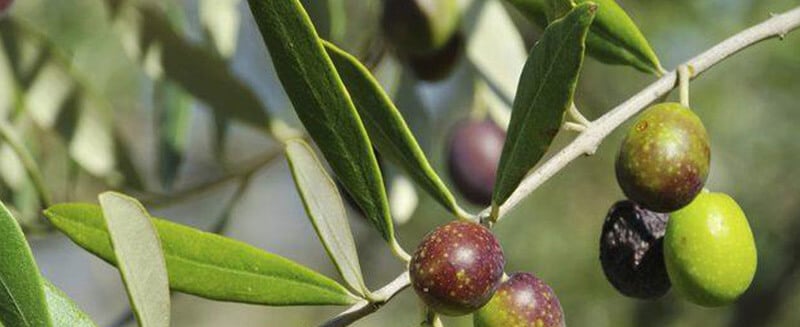Listen to this article
For almost their entire life cycle, annual plants take in nutrients from the soil through their roots. These nutrients are needed in the above-ground area for plant growth. Then, during the last moments of life, they recycle the nutrients accumulated in the plant tissue and transport them to the seeds.
In woody plants, the recycling of nutrients is even more important, and occurs both during vegetative growth and in the reproductive phase. The majority of nutrients used by growth structures (absorbent culm, sprouts, blossoms and fruits) are taken from the reserve of nutrients present in the roots, bark and above all from adult leaves. Only in the case of nutrients immobilized by the phloem (calcium, for example) and in very specific moments for certain mobile nutrients, the growing structures are nurished by minerals directly from the root.
Therefore, we should be aware that the profile of nutrients that the olive tree takes from the soil at a given moment does not normally coincide with what the shoots with fruit need.
This ability to use reserved nutrients, previously absorbed through the roots allows us to have a crop capable of producing a harvest with a very high physiological cost, in a climate with great uncertainty and scarce rain, as is the case with the Mediterranean climate.
In the reserve structures, the plant accumulates mineral nutrients, organic nutrients and even water. Keep in mind that in olive trees, the nutrient reserve is produced in the roots, bark and adult leaves, and that the vegetative sprout is especially important for correct development of the harvest.
%2012.32.12.png?width=314&name=Captura%20de%20pantalla%202019-06-17%20a%20la(s)%2012.32.12.png)
The olive tree does not risk its current harvest by using the nutrients it is taking up during this season; instead, it uses the resources that it already has in reserve. For example, during some years the spring may have been quite rainy and the nutrition in the roots adequate, with exuberant growth of sprouts and blossoms. But in other years, with little rain in spring, the olive tree can only extract limited humidity from the soil, and has to nourish its sprouts and blossoms mostly through reserved nutrients. Therefore, in adverse conditions, good nutritional conditions will guarantee a harvest.
Good vegetative shoots.
The olive tree has the strength to develop both vegetative and reproductive structures:
- Poor vegetative shoots: only the inflorescences are developing, with no vegetative growth at all.
- In seasons with mild atmospheric temperatures and soil humidity, the olive tree will take in more mineral nutrients than what it needs, accumulating the excess in its reserves; and at other times it will take from the reserve to complement what it has taken from the soil at that moment.
- Even though we may have irrigation and fertirrigation, genetics cannot be modified, and we should adapt to the physiology of the olive tree as a Mediterranean climate dryland tree, not the other way around.
- We should also keep in mind that the roots of the olive tree take different mineral nutrients from the soil according to the time of year.
- So, for example, excluding other limiting factors, the olive tree absorbs phosphorus mainly around sprouting time, nitrogen between flowering and hardening of the pit, and potasium between hardening of the pit and varaison.
Note that the strongest need for nitrogen in the olive tree occurs between blossoming and hardening of the pit, therefore the nitrogen used in the blossoming will be almost exclusively taken from the reserves.
While the reserves of the olive tree are located in the roots, buds, bark, and leaves, most of the nutrients that the shoots, blossoms and fruits will need come from the leaves and the dermal tissue of the shoots that carry these structures.
A long shoot with many large leaves is one of the main pillars in the productivity of the olive tree. A long shoot allows for good nutrient and mineral supply and also for organic nutrients to the leaf buds, flower buds, blossoms and fruits.
The new buds and shoots will be nourished by the shoot they came out of, which grew during the previous season.
Starting in summer (when the pits harden), the fruit will take the nutrients (both organic and mineral) it needs from both the older part of the shoot that is behind the olive, and the new part of the shoot that is in front of the olive which develops at the same time as the flower buds, the blossoms, and the fruits.
The longer the vegetative sprout, the better nutrition for the olives, and better expectations that the harvest will return the following year, given that this sprout has the flower buds in it for the next season.
Therefore, it is crucial for olive oil production, both for the year in process and the following, to have good vegetative shoots that grow and develop along with the young blossoms and fruits in spring and the first half of the summer.
This is obtained when there are no limiting factors on the olive tree in spring.
.png)




